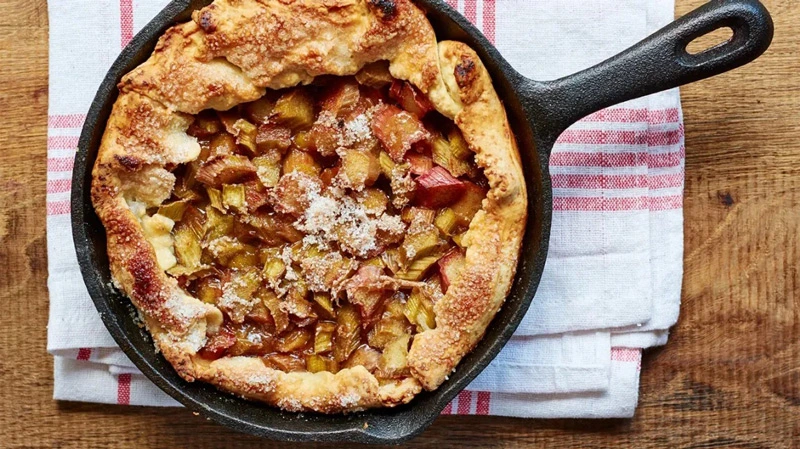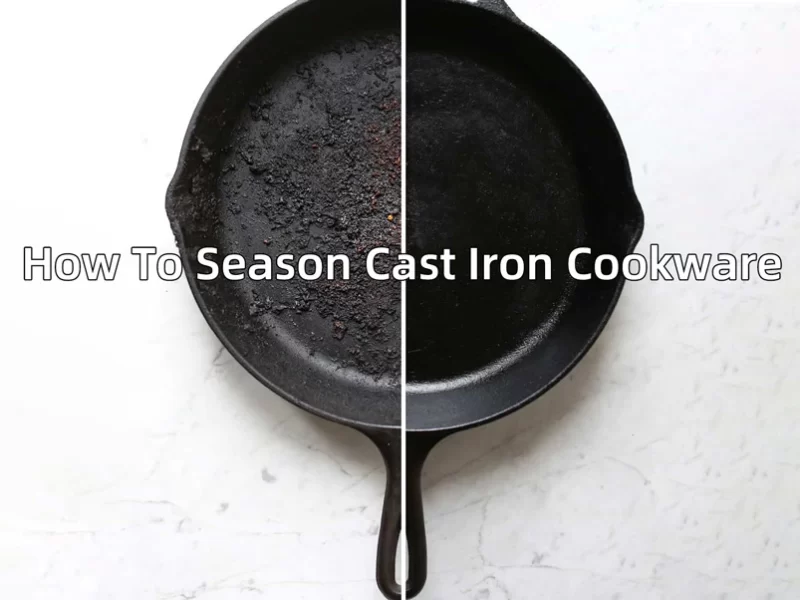
When you use cast iron cookware for a long time, you may find that the surface begins to rust and corrode. Cooked food loses its original flavor. Because the cookware is not properly maintained to keep it in good condition.
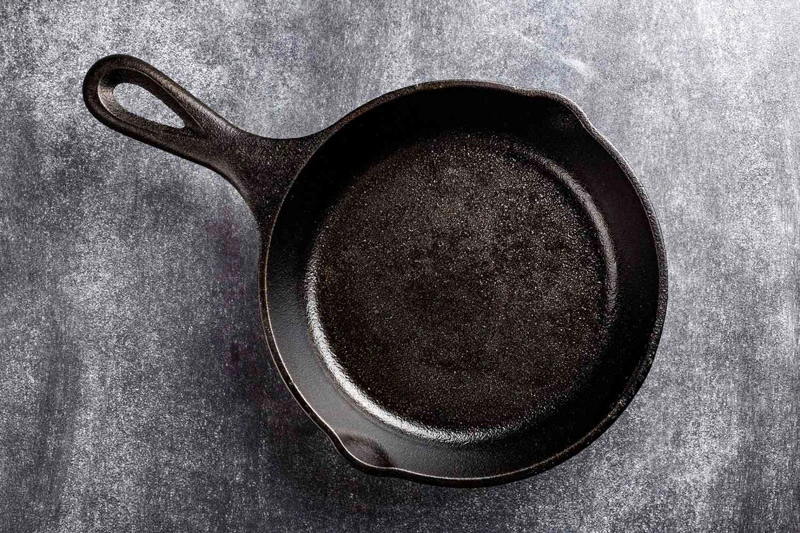
What is seasoning?
First of all, seasoning is the process of treating the surface of cast iron cookware with a non-stick coating made of polymerized fats and oils. It can prevent it from sticking to the surface of the pot when cooking food. It can not only protect the integrity and flavor of the food but also make cleaning more convenient and quicker.
Why does cast iron cookware need seasoning?
The material of cast iron أواني الطهي, when exposed to water and air, undergoes a stronger oxidation reaction than stainless steel cookware, which leads to rust. Therefore, seasoning is necessary to slow down the rust reaction, extend the life of the cookware, and reduce the cost of some household kitchenware. More importantly, it maximizes the use of cast iron cookware.
In a well-seasoned cast iron pan (one that has been rubbed with oil and repeatedly heated), the oil has broken down into a plastic-like substance that bonds to the surface of the cast iron pan. This layer of grease is what gives seasoned cast iron its nonstick properties, with the patina of polymerized grease locked tightly into the metal’s natural pores.
Seasoned cast iron cookware has a black luster and is very smooth. Using it properly will make it darker, smoother, and more naturally non-stick over time.
This layer of polymerized grease can also block the oxygen in the air from reacting with the surface material of the cookware, thereby achieving a non-stick coating that prevents rust.
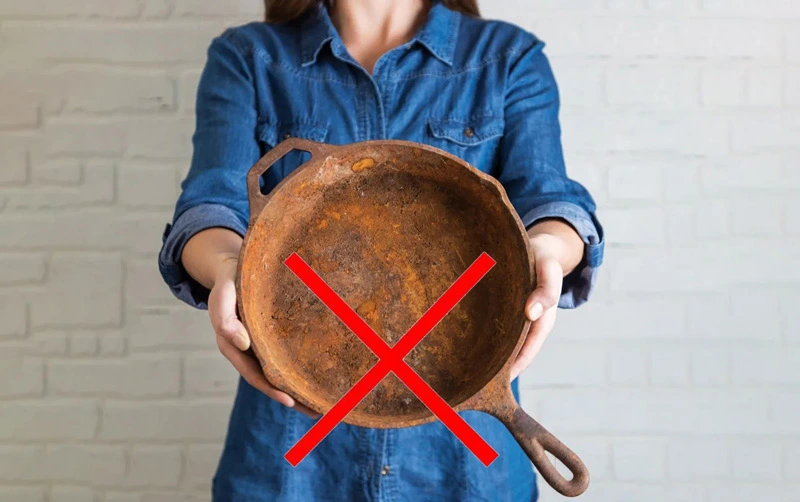
A Step-by-Step Guide on How to Season Cast Iron Cookware.
You will need to prepare the following أدوات المطبخ:
- Cleaning agent
- Vegetable oil or rapeseed oil
- Cleaning cloth
- إسفنجات تنظيف المطبخ
- Paper towel
Use a cast iron frying pan as an example:
Step 1: Clean your new cast iron cookware
Use warm water and detergent to scrub the entire frying pan first to remove any residue or rust. Be careful not to use a stainless scrubber, it is best to use a sponge brush for scrubbing. After cleaning, wipe off the moisture and keep it dry.
Step 2: Coat it with vegetable or canola oil
First method: Heat the frying pan on the gas stove and apply vegetable or canola oil to the surface or top of the pan. Use a paper towel to evenly apply a thin layer of oil to the surface or top of the frying pan. Apply a thin layer of oil to the edges and sides. Allow the cooking oil to burn off for another 10-15 minutes, but be careful not to burn all the oil. If it burns, don’t panic, just apply another layer of oil and continue heating.
Second method: First, preheat the oven to 350 to 375°F and spread the oil evenly on the surface of the frying pan.
After the oven is preheated, because the oil applied to the frying pan will flow, to ensure that it does not accumulate in the pan, you need to put the pan upside down on the oven rack. At this time, you need to place a layer of aluminum foil or a baking tray under the frying pan to prevent the oil from dripping into the oven. Let the frying pan bake for about an hour, then turn off the heat and wait for it to cool before taking it out.
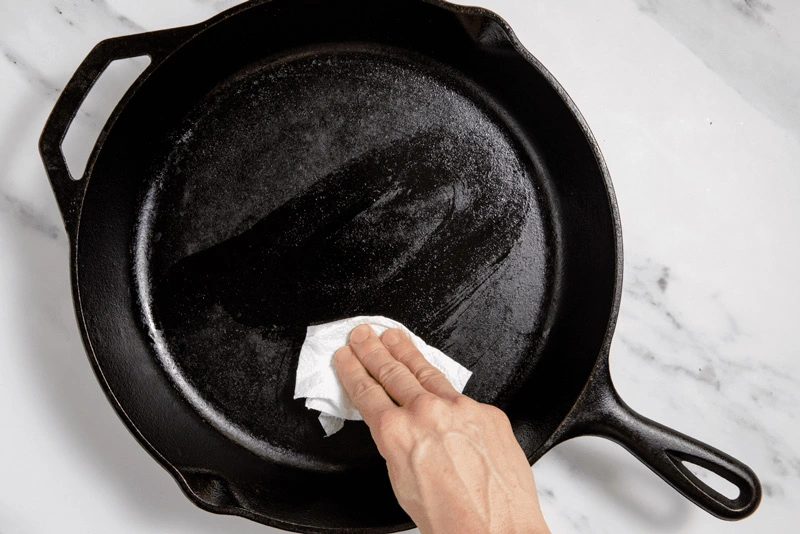
Step 3: Clean the seasoned pot
After seasoning, a protective layer has formed on the surface of the pot. It needs to be cleaned first to remove some excess impurities on the surface, and then normal cooking can be carried out.
How often should seasoning be done?
Once you’ve seasoned your new pan for the first time, you don’t need to season your pan every time you cook. Most foods won’t affect the surface of your pan. However, some foods can damage the nonstick coating, such as acidic foods or foods with a hard crust. If your pan starts to look dull, you notice rust, or you over-clean it, it’s a good idea to re-season it. Most of the time, a thin coating of oil is all you need to keep the cooking surface seasoned. Here’s when and how to season your pan after the initial seasoning.
- When you first use your frying pan, you should season it thoroughly before cooking.
- If you notice that the non-stick surface features are wearing off. If a lot of food residue is stuck to the surface, consider re-seasoning.
- After cooking acidic, strong foods. Highly acidic foods will damage the seasoning faster than non-acidic foods. Re-season when you cook acidic foods two or three times.
- After 10-12 uses. As part of regular maintenance of your frying pan, season thoroughly after multiple uses. Even if you don’t cook acidic foods, the seasoning will wear off over time. Regular maintenance and seasoning of your frying pan will keep it in good condition.
How to clean and maintain it after use?
When cleaning, the cleaning steps are the same as for most pots. Compared with pots without a non-stick coating or stainless steel cookware (click here to view the cleaning and maintenance of stainless steel cookware), you need to be careful not to use stainless steel wool to clean it when rinsing and scrubbing, because it will more easily damage the coating. After rinsing, you need to wipe off the water stains and put them in a ventilated place to air dry. Then season it once at irregular intervals.
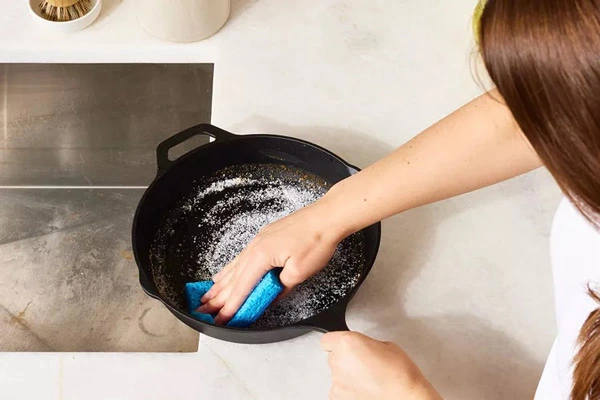
الخاتمة
Until now, most cast iron manufacturers will help customers pre-season their cast iron pans. However, to better ensure the non-stick properties of cast iron pans and subsequent maintenance, we still need to learn and operate how to season them.
